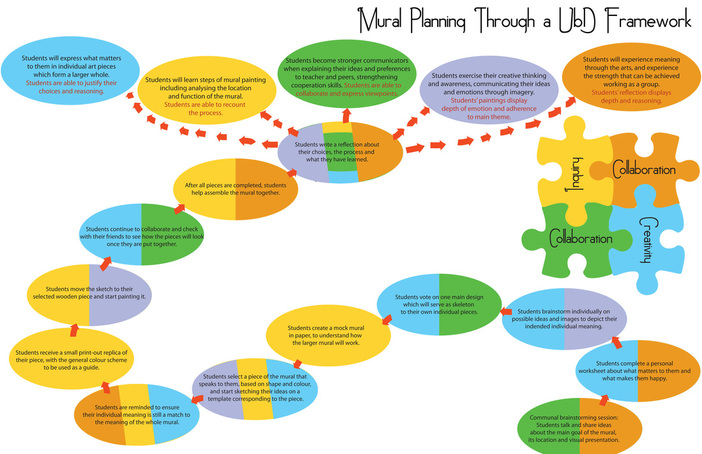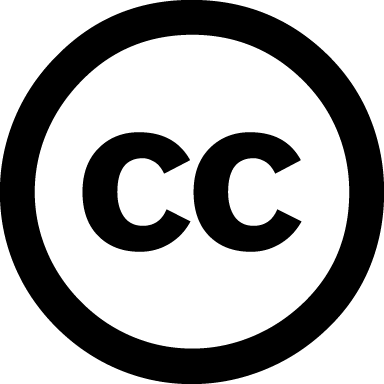That's one of the reasons I am happy we revisited Understanding by Design on my 502 class. This gave me a chance to look back at activities I had done before, and focus on one that I would have done differently, or planned better. I decided to pick mural planning because I am about to work on two new murals -- one with grade 9s, and one with grade 11s and 12s. Besides using the three step process to design the lesson, I also kept in focus another important detail of Understanding by Design, which is ensuring the student learns transferable skills, that can become a part of the student knowledge and can be used in the future.
Forcing myself to write the goals down also made them sound much more concrete than before. In retrospect, my goals were basic: "students finish mural" and "students depict their favourite things" and "students reflect on their work". That's what happens when you don't write things down, I suppose! That was a problem, specially because this mural (and other activities that incorporate inquiry and Sparks) are supposed to be easily followed online by other teachers, should they choose to do so. Without clear goals and a good reason why, how could I expect others to take on such daunting projects?
My five new goals are much more true to what I am actually trying to coach students towards. One of the most important portions of their learning, the ability to communicate and come to an agreement, to collaborate and work on something big together, was nowhere to be found. Under my replanned activity, communication is everywhere!
On my final graphic, I used a colour coordinated system in order to track down which activities addressed which goals. This is also a huge improvement from my previous tracking system, which was... well, none. I knew the activity was helping achieve a goal, but since nothing was tracked, nothing was clear. I found out through the graph, the activities usually touch upon at least two goals.
Also, I noticed that by defining the assessment piece before jotting down my activities, I was able to add activities that allowed for more demonstrations of learning. Encouraging students to continue to collaborate to make sure the pieces fit, for instance, is not something I had done previously; I did notice a few students were doing this on their own, and those pieces looked better together than the rest. So, this activity is good towards the goal of collaborating, it is natural for students, and it makes the final result a stronger piece, besides matching the assessment piece "Students are able to collaborate and express viewpoints".
Guiding students through an inquiry project on an online setting is one of my dreams. To do something like this, however, it is important to define my goals and the steps to be taken in a simple and straightforward manner.
My next step in this process will be to create a student-centered guide to this creative inquiry process. So far, I have a lot for teachers, but not a whole lot for students. But there is time!

 RSS Feed
RSS Feed



